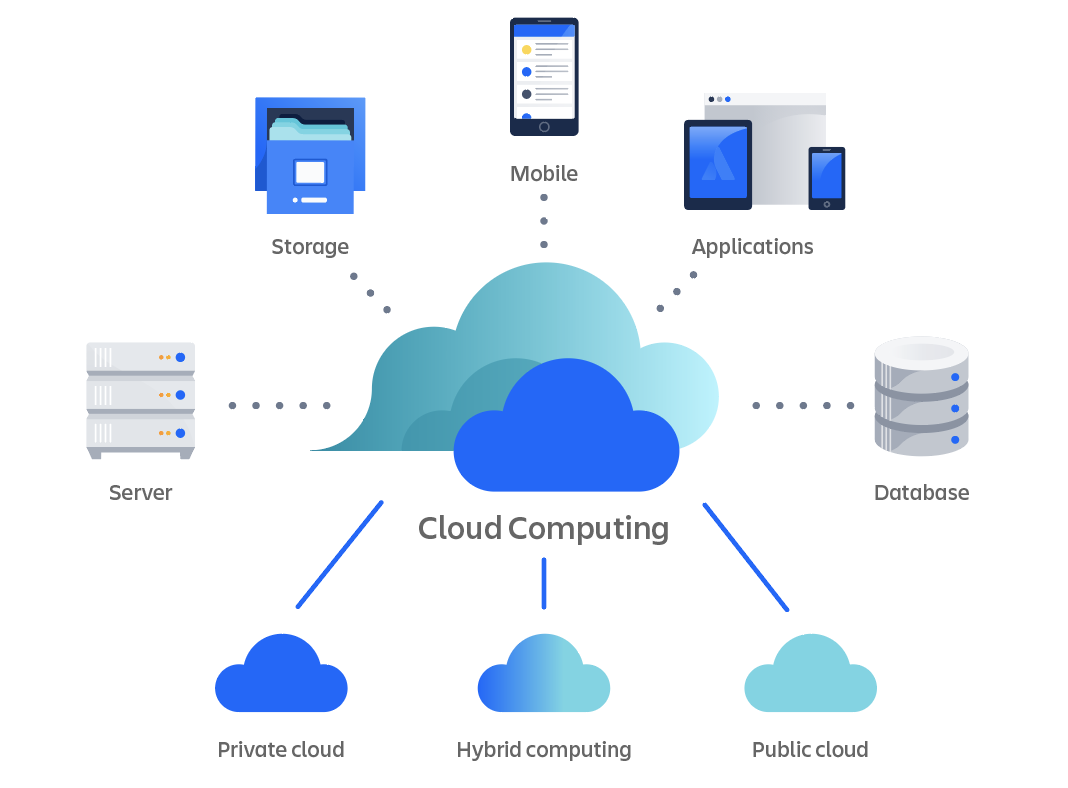Universal Cloud Service: Reliable Data Storage and Administration Solutions
Universal Cloud Service: Reliable Data Storage and Administration Solutions
Blog Article
Drive Advancement: Harnessing the Power of Cloud Services
In the hectic landscape of modern organization, using the power of cloud solutions has become a critical aspect for companies aiming to drive development and maintain an one-upmanship. The ability to scale resources dynamically, embrace innovative technologies flawlessly, and simplify growth procedures effectively can dramatically influence a company's ability to adapt and introduce. As we discover the elaborate relationship between cloud services and technology, appealing insights on just how cloud remedies revolutionize conventional service practices and lead the way for groundbreaking advancements will be exposed.
Benefits of Cloud Services
Cloud services use various benefits to companies and people looking for adaptable and effective options for their electronic demands. One of the crucial benefits of using cloud services is the cost-effectiveness they give.
In addition, cloud services improve availability and partnership amongst groups. With data kept in the cloud, staff members can securely access documents and applications from anywhere with a net link, advertising remote job abilities and improving efficiency. Real-time partnership features allow several customers to work with records at the same time, fostering seamless team effort despite physical location.
An additional advantage of cloud solutions is the improved information security and calamity recuperation they use. Cloud service providers carry out innovative protection procedures to safeguard data from cyber threats, ensuring conformity with sector laws. In addition, automatic backups and recuperation solutions decrease the danger of information loss because of unanticipated events, supplying peace of mind to customers.
Cloud Migration Approaches
Transitioning to cloud services involves meticulous planning and tactical implementation to make sure a smooth and reliable movement process. There are several cloud migration techniques that organizations can take into consideration when relocating their procedures to the cloud. One typical method is the 'Rehost' method, where applications are raised and moved to the cloud with very little adjustments. This method is fast but may not fully optimize cloud advantages. The 'Replatform' method involves making some cloud optimizations throughout movement, such as updating the application design to take benefit of cloud-native features. universal cloud Service. For a more detailed transformation, the 'Refactor' strategy involves rearchitecting applications to be cloud-native, improving scalability and efficiency. Furthermore, the 'Repurchase' strategy includes replacing existing software application with cloud-based alternatives, while the 'Retire' strategy includes decommissioning redundant applications. Choosing the right migration approach relies on aspects like cost, timeline, and wanted results, requiring a careful evaluation of each choice's advantages and difficulties.
Enhancing Partnership in the Cloud
Enhancing team collaboration via cloud-based tools can substantially increase performance and streamline interaction within companies. By leveraging cloud solutions, groups can function with each other flawlessly regardless of their physical areas, allowing real-time collaboration on projects.

Security Considerations for Cloud Adoption
How can organizations ensure the durable security of their data when adopting cloud services? Protection factors to consider are extremely important in the fostering of cloud services. To guard information, organizations need to initially carry out a detailed risk assessment to identify potential susceptabilities and dangers. Carrying out solid file encryption techniques for data both in transportation and at rest is vital. Gain access to control devices must be established to limit unapproved entrance, and multi-factor verification can add an extra layer of security. Routine security audits and monitoring of the cloud environment aid in discovering and alleviating any type of security violations quickly.

Cloud-Native Innovation Practices
In the world of cloud Get More Information computing, accepting cloud-native development techniques is crucial for organizations making every effort to optimize their digital facilities and improve operational performance. Cloud-native development techniques include creating applications particularly for cloud settings, leveraging the scalability, versatility, and dexterity that cloud services provide. Deliberately applications with cloud-native concepts in mind, such as microservices architecture, containerization, and orchestration, companies can streamline their development processes, enhance source utilization, and react better to changing market needs.
Additionally, cloud-native advancement techniques promote continuous combination and continuous delivery (CI/CD) pipelines, making it possible for automated screening, deployment, and surveillance of applications. This iterative strategy cultivates faster innovation cycles and boosts total software application quality. Additionally, making use of serverless computing and took care of solutions permits companies to concentrate on creating core business functionalities while offloading facilities monitoring tasks to cloud provider.
Fundamentally, accepting cloud-native technology methods empowers companies to drive innovation, increase time-to-market, and remain competitive in today's quickly evolving electronic landscape.
Verdict

As we check out the detailed relationship between cloud services and development, appealing insights on just how cloud remedies revolutionize standard organization practices and lead the means for groundbreaking innovations will certainly be exposed. - cloud services press release
There are several cloud movement methods that organizations can consider when relocating their operations to the cloud. Cloud-native advancement practices involve developing applications particularly for cloud settings, leveraging the scalability, flexibility, and dexterity that cloud solutions offer. Additionally, the use of serverless computer and managed solutions permits organizations to concentrate on creating core service functionalities while offloading facilities management jobs to shadow solution providers.
It is important for firms to take into consideration cloud migration techniques, enhance partnership in the cloud, and prioritize security procedures to guarantee successful adoption of cloud solutions and drive technology within their organization.
Report this page